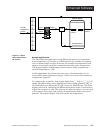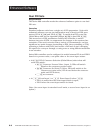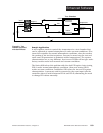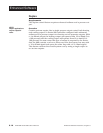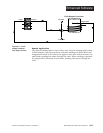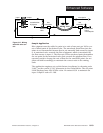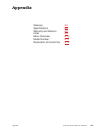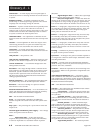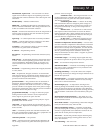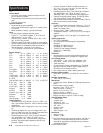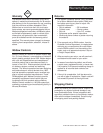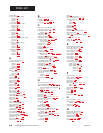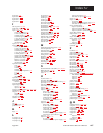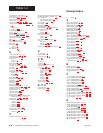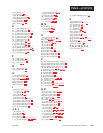
A.2 WATLOW Series 988 User’s Manual
Appendix
Glossary, A - L
annunciator — A visual display that uses pilot lights to
indicate the former or existing condition of several items in
a system.
bumpless transfer — A smooth transition from auto
(closed loop) to manual (open loop) operation. The control
output(s) does not change during the transfer.
burst fire — A power control method that repeatedly turns
on and off full ac cycles. Also called zero-cross fire, it
switches close to the zero-voltage point of the ac sine wave.
Variable-time-base burst fire selectively holds or transits
ac cycles to achieve the desired power level.
calibration offset — An adjustment to eliminate the dif-
ference between the indicated value and the actual process
value.
cascade — Control algorithm in which the output of one
control loop provides the set point for another loop. The
second loop, in turn, determines the control action.
closed loop — A control system that uses a sensor to
measure a process variable and makes decisions based on
that feedback.
cold junction — See junction, cold.
cold junction compensation — Electronic means to com-
pensate for the effective temperature at the cold junction.
current transformer — A transformer designed for mea-
suring electrical current.
dead band — The range through which a variation of the
input produces no noticeable change in the output. In the
dead band, specific conditions can be placed on control
output actions. Operators select the dead band. It is usu-
ally above the heating proportional band and below the
cooling proportional band.
default parameters — The programmed instructions that
are permanently stored in the microprocessor software.
derivative — The rate of change in a process variable.
Also known as rate. See PID.
Deutsche Industrial Norm (DIN) — A set of technical, sci-
entific and dimensional standards developed in Germany.
Many DIN standards have worldwide recognition.
DIN — See Deutsche Industrial Norm.
droop — In proportional controllers, the difference
between set point and actual value after the system stabi-
lizes.
duty cycle — The percentage of a cycle time in which the
output is on.
external signal conditioner power supply — A dc voltage
source that powers external devices.
filter —
digital filter (DF) — A filter that slows the
response of a system when inputs change unrealistically
or too fast. Equivalent to a standard resistor-capacitor
(RC) filter.
digital adaptive filter — A filter that rejects high
frequency input signal noise (noise spikes).
heat/cool output filter — A filter that slows the
change in the response of the heat or cool output. The out-
put responds to a step change by going to approximately
2/3 its final value within the number of scans that are set.
form A — A single-pole, single-throw relay that uses only
the normally open (NO) and common contacts. These con-
tacts close when the relay coil is energized. They open
when power is removed from the coil.
form B — A single-pole, single-throw relay that uses only
the normally closed (NC) and common contacts. These
contacts open when the relay coil is energized. They close
when power is removed from the coil.
form C — A single-pole, double-throw relay that uses the
normally open (NO), normally closed (NC) and common
contacts. The operator can choose to wire for a Form A or
Form B contact.
hunting — Oscillation of process temperature between the
set point and the process variable.
hysteresis — A change in the process variable required to
re-energize the control or alarm output. Sometimes called
switching differential.
integral — Control action that automatically eliminates
offset, or droop, between set point and actual process tem-
perature. See reset, automatic.
isolation — Electrical separation of sensor from high volt-
age circuitry. Allows use of grounded or ungrounded sens-
ing element.
Joint Industrial Standards (JIS) — A Japanese agency
that establishes and maintains standards for equipment
and components. Also known as JISC (Japanese Industrial
Standards Committee), its function is similar to Germany’s
Deutsche Industrial Norm (DIN).
JIS — Joint Industrial Standards.
junction — The point where two dissimilar metal conduc-
tors join to form a thermocouple.
cold junction — Connection point between ther-
mocouple metals and the electronic instrument. See refer-
ence junction.
grounded junction — Type of thermocouple
probe in which the hot, or measuring junction, is an inte-
gral part of the sheath material. No electrical isolation is
provided.
isolated junction — A form of thermocouple
probe construction in which the measuring junction is
fully enclosed in a protective sheath and electrically isolat-
ed from it. Commonly called an ungrounded junction.
reference junction — The junction in a thermo-
couple circuit held at a stable, known temperature (cold
junction). Standard reference temperature is 32°F (0°C).
thermocouple junction — The point where the
two dissimilar metal conductors join. In a typical thermo-
couple circuit, there is a measuring junction and a refer-
ence junction. See reference junction.
ungrounded junction — See isolated junction.



